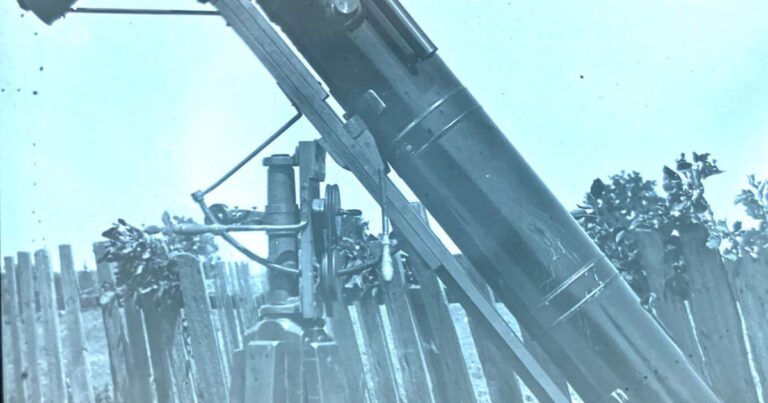Seeing astronomical phenomena usually requires staying up late or knowing when and where to spot planets and stars. The total solar eclipse on April 8th will occur regardless of our knowledge or interest. Regardless of whether the sky is clear or cloudy, it will be dark over the northern Finger Lakes by about 3:20 p.m. that day.
Ontario County has strong ties to 19th and early 20th century astronomy through William R. Brooks (1844-1921). Living in Phelps and later Geneva, he discovered 27 comets, many using homemade equipment and with fewer qualifications than academic astronomers. He lectured on astronomy on the Finger Lakes and throughout the United States. From 1900 until his death, Brooks served as professor of astronomy at Hobart College, after which he served as professor of astronomy at William Smith College.
Born in Maidstone, England in 1844, Brooks had many interests as a child. He experimented with steam engines, optical lenses, and cameras, often making them himself. During his voyage to Australia, he became interested in astronomy after seeing his captain map the stars with a sextant. Brooks built his first telescope at the age of 14. It was a simple telescope with his two lenses, similar to the telescope used by Galileo Galilei in the early 1600s.
The family moved to Darien, Genesee County, New York, in 1857. Rev. William Brooks was a Baptist minister in Darien. His son gave his first astronomy lecture at the pastor's church when he was 17 years old.
Interested in mechanics and drafting, Brooks began working as a draftsman in foundries and steam engine factories. He gained experience in manufacturing and quickly put it to use. In 1868 he married Mary Smith and moved to Phelps in 1870.
At Phelps, Brooks made a living as a professional photographer, but astronomy was his passion. He built a grinding and polishing machine to make parabolic mirrors for reflecting telescopes, which was more advanced than his first efforts. He created lens barrels and accessories for increasingly larger telescopes.
The Brooks family lived outside the village on Lester Road between Route 96 and Griffith Road. The building, known as the Red House, no longer stands, but is marked with a historical marker. In 1874, Brooks completed the Red House Observatory next to his home. “Observatory” was generous. It was not a domed building, but an outdoor platform where he carried his telescope every night. On October 3, 1881, he discovered his first comet. Over the next seven years, he recorded ten more comets.
Brooks was at the podium in all weather conditions, as long as the skies were clear. In 1883, Geneva advertiser “In order to climb up to the observatory, one day we had to shovel up a lot of snow, build a bridge across a ravine in the garden, carry out a large telescope and adjust the frame,” and the mercury was 6 degrees below zero. It was an evening. ”
smith observatory
In 1887, William Smith (1818-1912) visited Brooks in Phelps to see his work. He provided Brooks with a home and a professional observatory at 620 Castle Street in Geneva, next door to Smith's home. Brooks became director of Smith Observatory, and he also discovered 16 comets.
In a 1913 lecture at the Geneva YMCA, Brooks described the process of claiming the discovery of a comet. “First, we must determine its position, direction, and rate of motion, and then telegraph that information to Harvard Observatory,” he said. From here the news was broadcast throughout the country and sent by wire to Europe, and within hours the discovery was known around the world. Comet Brooks in 1911 was discovered at 4am, and the news was telegraphed to Harvard University at 6am. By 9 o'clock this discovery became known around the world. ”
In 1900, Hobart University hired Brooks as professor of astronomy. The university had a campus observatory, but it was demolished in 1900 to make way for new construction. Smith Observatory became the university's telescope. Brooks maintained a busy schedule until the end of his life, teaching during the day and working at the observatory most nights.
Brooks died at his home on May 3, 1921. Geneva Daily Times “He was a man of the highest quality of the country, well-liked by all with his gentle disposition and courteous manner, and possessed all the qualities of an 'old-school' gentleman.”
Marks is curator of collections at Historic Geneva.


